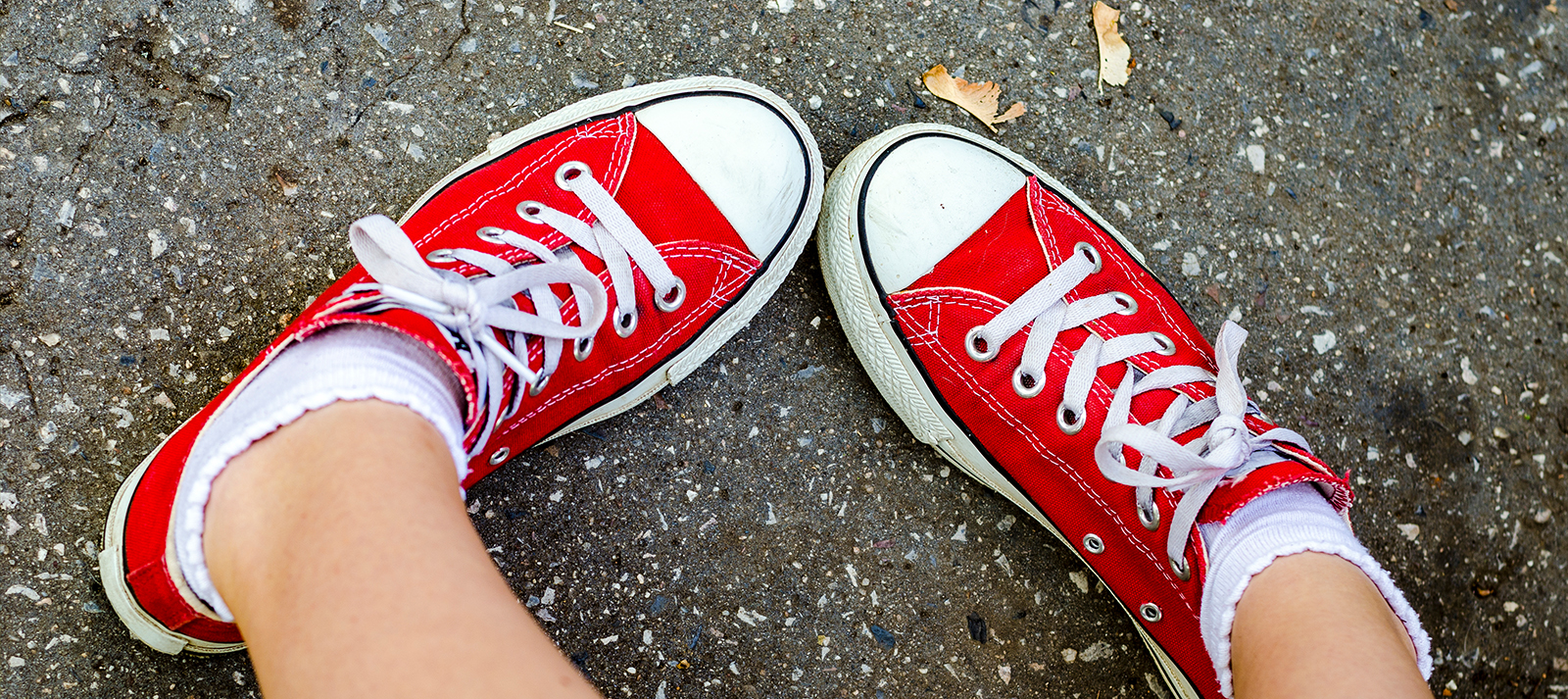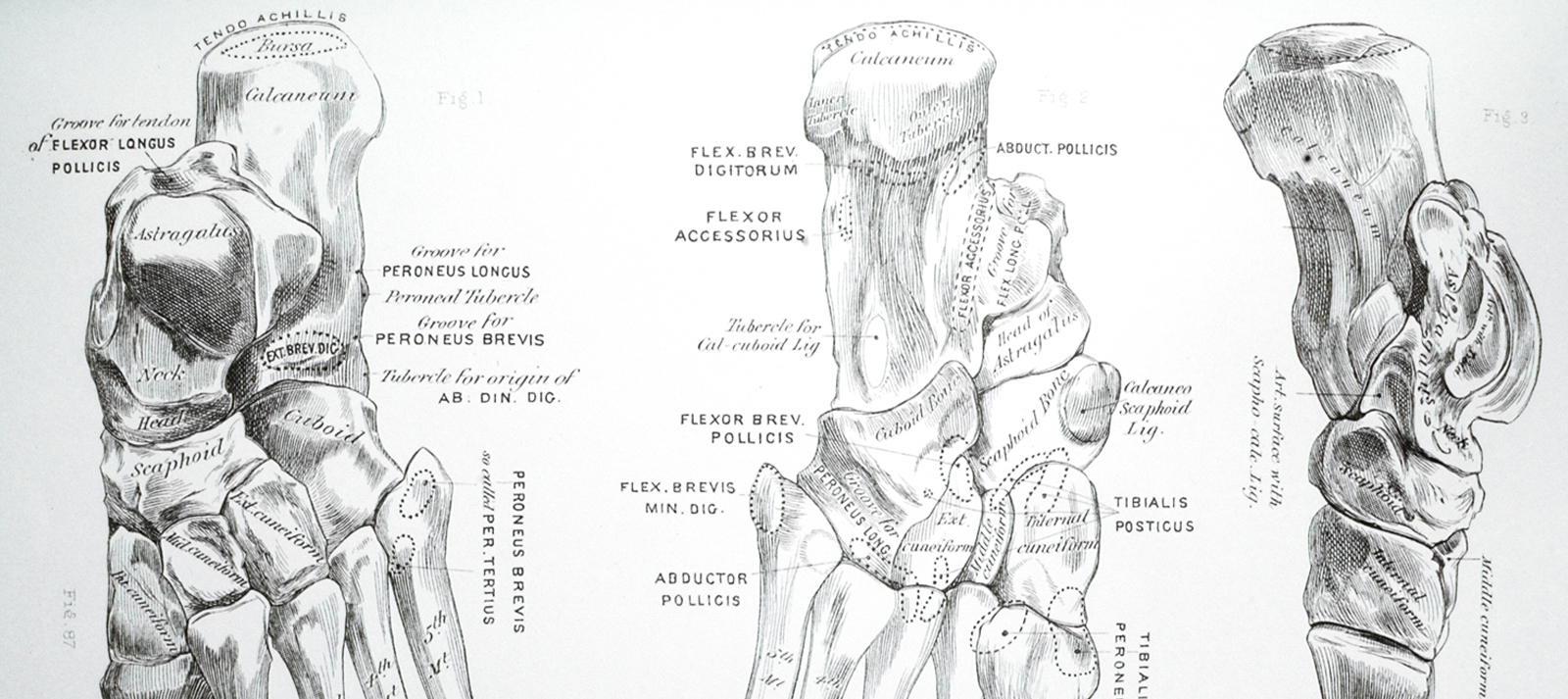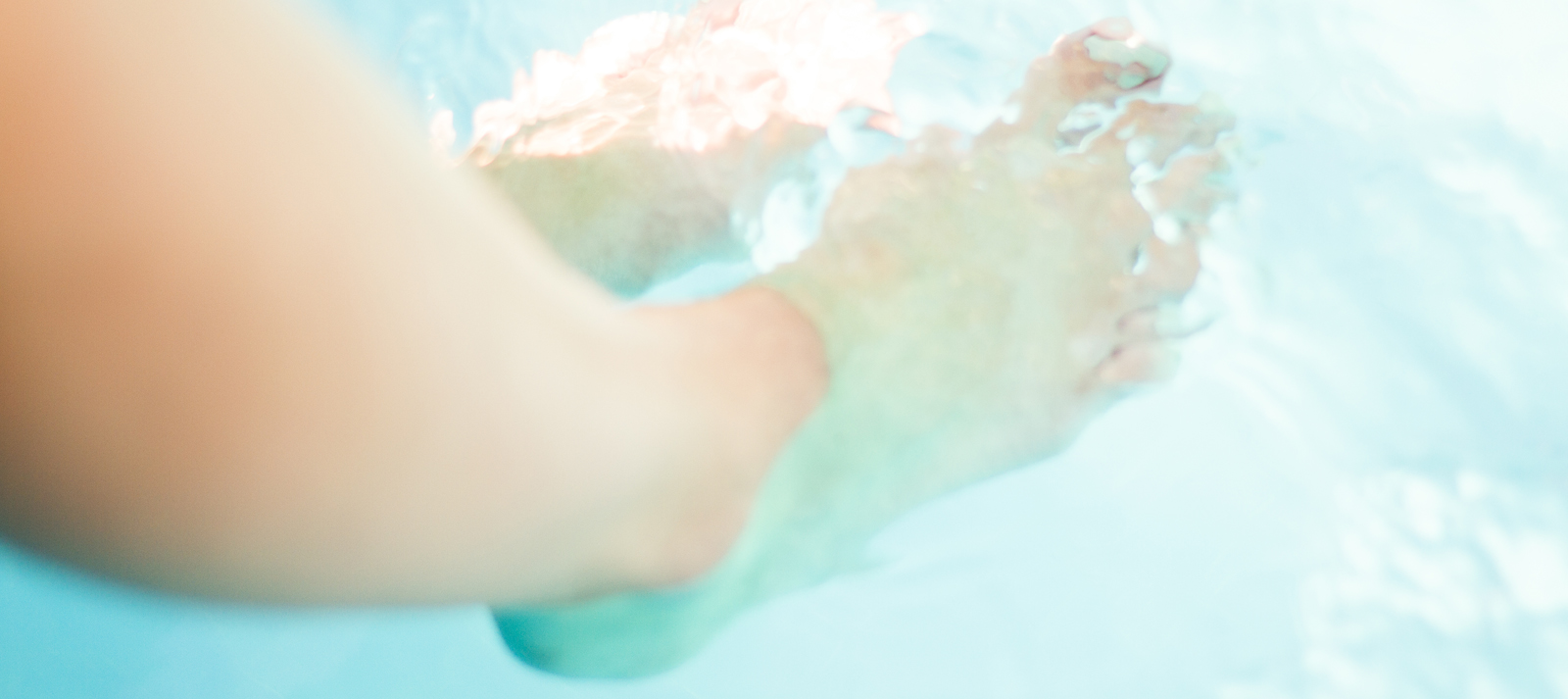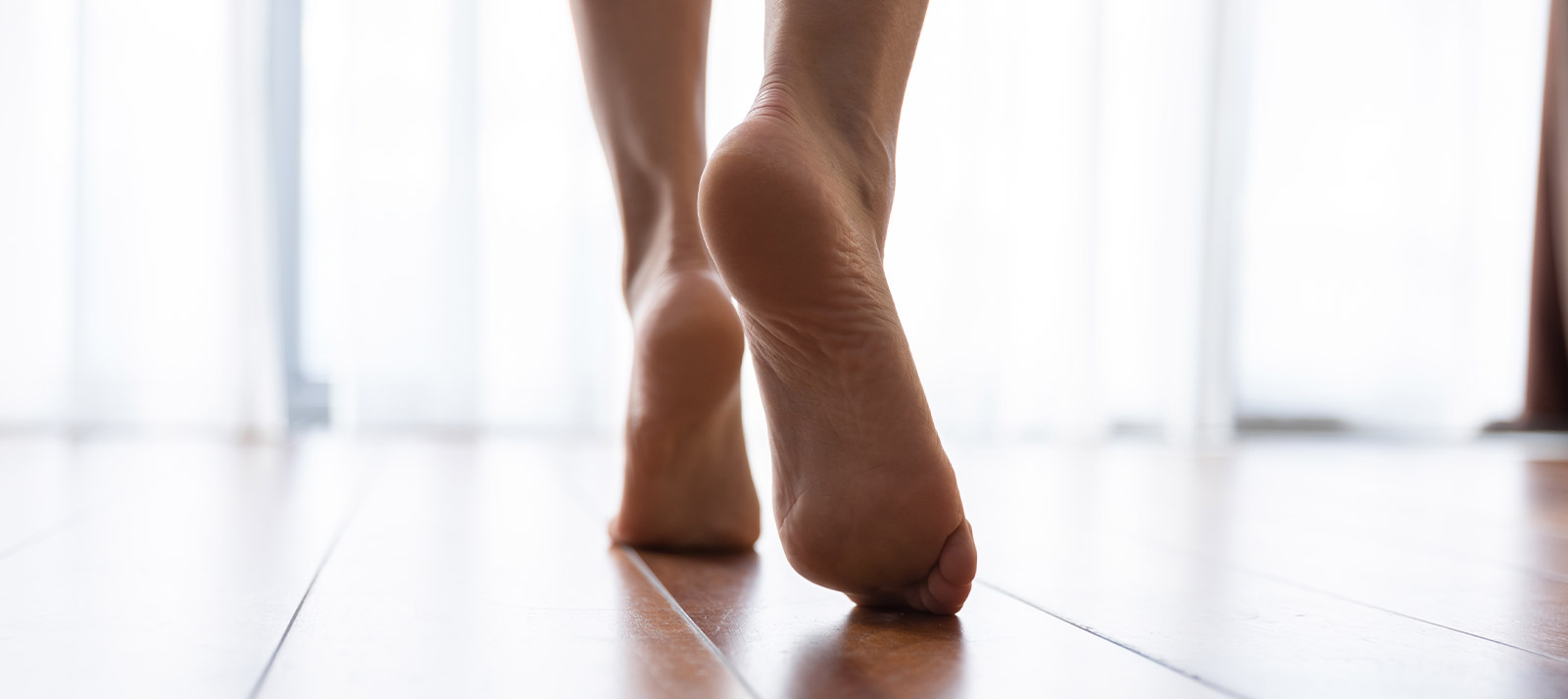Should I Worry If My Child Is Pigeon-Toed Or Duck-Footed?
Should I Worry If My Child Is Pigeon-Toed Or Duck-Footed?
Source: The Conversation
Babies regularly have their feet, legs and hips checked by their doctor in hospital, or at maternal and child-health nurse visits.
As children grow, parents are often concerned about their feet pointing inwards when they walk (also called in-toe or pigeon-toed walking) or outwards (also called out-toe walking or duck-footed).
These walking positions, commonly called “rotational deformities”, often cause parents to seek the opinion of an orthopaedic surgeon, physiotherapist or podiatrist for more specialized assessment.
Rotational deformities
When the leg or foot faces inwards or outwards during walking, it may be from a number of typical changes in the leg or foot.
When a baby is born they often have bowed or curved legs. This is thought to be because of the position of the baby in the womb.
This position can remain and seem more obvious when the child begins to walk. It may appear as if the feet face inwards. Sometimes children may appear to trip or fall over their own feet.
In-toe walking may come from a curved foot (metatarsus adductus) or an inwards twist in the leg bones (tibial or femoral torsion).
Similarly, out-toe walking may appear from the foot or leg. A foot that is very rolled in or “pronated” may appear as if it is pointing outwards. A leg may also turn outwards from the leg bones or the hip.
The flexibility of a child’s joints or the way they use their muscles could also cause in-toeing or out-toeing. A twist in their bones is one possible contributing factor to in-toe or out-toe walking.
Curved feet
Metatarsus adductus is the most common foot deformity in infants. In metatarsus adductus, the foot has a curved or banana-shaped appearance. In 95% of cases, the foot corrects itself with no treatment.
In the past, it was recommended to put shoes on the wrong feet. This is no longer recommended as it may cause further foot deformity.
Sometimes treatment is needed. Plaster casting or splinting may be required to help the foot straighten if it doesn’t on its own.
Parents should see a health professional if their child’s foot is curved, stiff and unable to be straightened, or isn’t straightening as their child gets older.
Twisted shin bones
Tibial torsion is where the lower leg or tibia turns in or outwards. An inward-turned tibia is common in children under the age of three. It usually straightens after this age and sometimes even slightly turns outward with no treatment. These changes occur in children up to the age of eight.
Health professionals will sometimes recommend children with in-toe walking wear a type of orthotic called gait plates. While gait plates may provide some cosmetic effect when worn, there is no evidence they will result in long-term change.
Parents should be cautious about claims these devices will fix in-toe walking. They need to consider if the expense is worth it for something that will naturally get better on its own. There is no good evidence stretches or footwear will change this type of walking.
Turning inwards or outwards at the hip
Femoral torsion is where the upper leg bone (femur) or hip is turned in or outwards. Children may appear to walk with their feet inwards or outward. It also looks like their knees point inwards or outwards.
The femur goes through many changes up to the age of 12 and an inward turn at the hip is more commonly seen in girls. Rotational changes at the top of the leg are also a very normal part of growth.
Walking changes from the top of the leg and hip sometimes appear more common in children who frequently W-sit. This sitting position is with their bottom on the ground and legs folded outwards.
There is no research proving sitting like this is harmful, but therapists often observe hip muscle tightness in children who sit this way and it may affect the child’s walking. As harm is unknown, it might be best to get children to sit or play in other positions.
There are no shoes, orthotics, garments, taping or stretches that have evidence supporting them being used to change walking associated with these rotational changes. Parents should seek medical attention quickly if there is pain at the hip or pain extends into the groin while walking at any age.
Children walk in-toe and out-toe for many reasons. Parents should see a health professional if their child is tripping from their leg position when their child is school-aged, if one leg turns substantially more inwards or outwards than the other, seems longer or looks very different compared to the other.
For the majority of children, in-toe or out-toe walking is just part of growth.
Balance Foot & Ankle Expands Footprint, Adding Medina Location
Balance Foot & Ankle Expands Footprint, Adding Medina Location
Lakewood, OH (September 29, 2020) — Balance Foot & Ankle, a restorative foot and ankle practice, today announced the opening of its second location at 4071 North Jefferson Street in Medina, Ohio.
“We’re excited to extend our unique patient services and approach to foot wellness to even more communities in Northeast Ohio,” said Dr. Jennifer L. Prezioso, Founder & CEO, Balance Foot & Ankle. “Our new facility will offer our well-rounded and comprehensive approach for all patients as we continue to foster an environment of excellence, hospitality and compassion.”
The new facility in Medina is in addition to the practice’s current location at 14200 Madison Avenue, Lakewood, Ohio 44107. To schedule an appointment, visit balancecle.com or call (216) 658-0111.
About Balance Foot & Ankle
Balance Foot & Ankle is a patient-centered, state-of-the-art practice led by highly trained and experienced surgeons who specialize in reconstruction and trauma of the foot and ankle with an emphasis on education, health and wellness.
Learn more at balancecle.com.
Should You Take 10,000 Steps a Day for a Balanced Life?
Should You Take 10,000 Steps a Day for a Balanced Life?
Is 10,000 the magic number? Well, it all depends on your current fitness level and your goals. The average American walks 3,000 to 4,000 steps a day, that’s about 1.5 to 2 miles. Understanding how many steps you walk now is a great way to establish your baseline to plan for the future. But before you do anything, it is important to first define your goals, such as to:
- Increase general health, wellness and fitness
- Decrease weight
- Maintain health
Increase general health, wellness & fitness
If you’re new to exercising or returning from an injury, you’ll want to start slowly to avoid burnout or further injury. After you have established your baseline, you can work up toward your goal by adding 1,000 extra steps a day each week. Meeting your goal could be as simple as an extra five-minute walk, or even parking further away in the parking lot at the grocery store.
Decrease weight
With a little math, you can determine how many steps you need to take each day to achieve your weight goal. The Academy of Nutrition and Dietetics recommends slow weight loss for lasting results. This translates to about 1/2 pound to one pound per week. Completing an extra 10,000 steps each day could burn about 2,000 to 3,500 extra calories each week. One pound of body fat equals 3,500 calories, so depending on your weight and workout intensity, you could lose about one pound per week simply by adding 10,000 steps each day.
Maintain health
Maintaining your desired goal could be just as challenging as achieving your goal if you don’t have the right plan in place. The 10,000-step goal could be right for you—and the benefits of a 30-minute daily walk are impressive, helping to reduce your risk of common health problems such as:
- Heart disease
- Obesity
- Diabetes
- High blood pressure
- Depression
Additionally, one study out of California State University showed that mood lifted in correlation with increased numbers of daily steps, and researchers at the Harvard School of Public Health found that 30 minutes of walking each day cut stroke risk by a minimum of 20%. It’s important to note ethat you will also burn calories and fat and enjoy vitamin D from the sun while you’re in the sun.
Simple Solutions
So, how can you include more steps in your day?
- Take the stairs
- Take the dog for a walk
- Walk while listening to music to make your walk more enjoyable and help motivate you to walk farther or faster
- Instead of sending a work email, walk to your colleague’s desk
- Have a walking meeting versus sitting in the office
- Walk while waiting: Take a walk instead of sitting while you’re waiting for an appointment
- Break up the day with workday walks by setting reminders on your calendar for short walking breaks to increase energy throughout the day
- Choose parking spots farther away from the entrance. If you take the bus, get off a stop early and walk the rest of the way.
Your goal will depend on your starting point. However, everyone can gain the benefits of walking more, step by step. We hope you find a balanced approach to improve your wellbeing from head to sole.
If you find that you need help along the way to care for any foot or ankle pain, or even injury, let us know. Together, we can find foot and ankle health and wellness solutions to help you move beyond the issues preventing you from achieving your wellness or exercise goals.
Harnessing Your Body's Natural Defenses
Harnessing Your Body's Natural Defenses
In recent years, doctors have learned that the body has the ability to heal itself. Autologous platelet rich plasma (A-PRP) therapy is a form of regenerative medicine that can harness your body’s own natural growth factors your body uses to heal tissue. At Balance, this method is used to harness your body’s own natural components and treat foot and ankle injuries.
A-PRP is a biological solution from the patient’s whole blood that has concentrated growth factors, high levels of platelet concentration, and proteins, that help your blood to clot. It also contains proteins that support cell growth. Researchers have produced PRP by isolating plasma from blood and concentrating it. The idea is that injecting PRP into damaged tissues will stimulate your body to grow new, healthy cells and promote healing. Because the tissue growth factors are more concentrated in the prepared growth injections, researchers think the body’s tissues may heal faster. Many famous athletes like Tiger Woods and tennis star Rafael Nadal have been known to use these injections to help heal injuries.
A member of the healthcare team at Balance will obtain a small amount of blood from your arm using a small needle and a syringe. The blood will be put through a “soft” centrifugation spinning process that will separate and concentrate the platelets and other beneficial components including growth factors. The platelets and growth factors are mixed within the plasma and are then applied to the treatment area. This A-PRP process is usually done in less than 15-20 minutes.
They are the main component of A-PRP and play a central role in hemostasis and tissue healing. Platelets are the architects of tissue healing as their presence at
an injury site initiates and guides the healing process.
Contact us and ask if A-PRP is the right treatment for you. The proper course of therapy will be determined upon examination and if the use of A-PRP may benefit you based on your injury.

There are three simple steps:
- Blood Draw: Using a small butterfly needle, a member of the Balance nursing staff will draw a small amount of blood from your arm into the Regen THT tube
- Load, Balance & Spin: The Regen THT tubes are inserted into the centrifuge and spun at high speed for 8 minutes to separate the various components of your own blood
- Platelet Preparation: After your blood is spun down and separated into its individual components, the platelet-rich plasma (the yellow area) is used by your healthcare provider to treat the injured area

Technology for a Better Patient Experience
Technology for a Better Patient Experience
Following the patient-centered philosophy, Balance Foot & Ankle recently invested in new technology to offer patients greater choice in their medical care. Most people that suffer from joint pain may assume that an MRI is required to view an injury. However, Balance now offers technology solution at its state-of-the-art practice that could save you time when evaluating foot and ankle pain or injuries.
The mi-eye is an in-office handheld diagnostic scope that is inserted into a joint to view the injury. The scope has a light source and camera that displays a clear image of your injury on a high definition tablet display. In some instances, the in-office mi-eye procedure may be an acceptable alternative to an MRI.
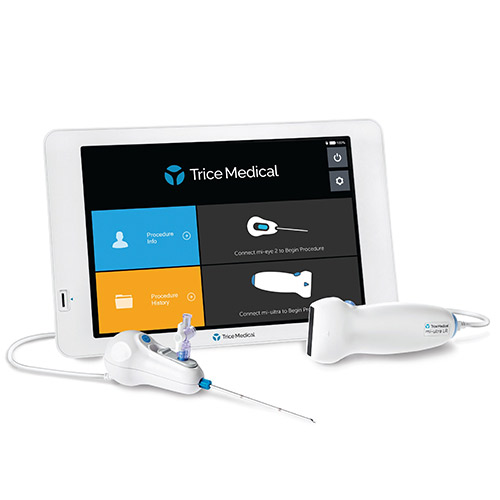
- Our team at Balance will clean and sterile prep the procedure site
- Local anesthetic numbs the skin and surrounding area to reduce pain
- Once the joint is numb, your doctor will re-prep the area and insert the mi-eye into the joint
- During the procedure, your doctor will examine your joint, giving you a real-time view with little to no pain
- After the procedure, the area is bandaged and you can return to activities as tolerated with an immediate answer and treatment plan
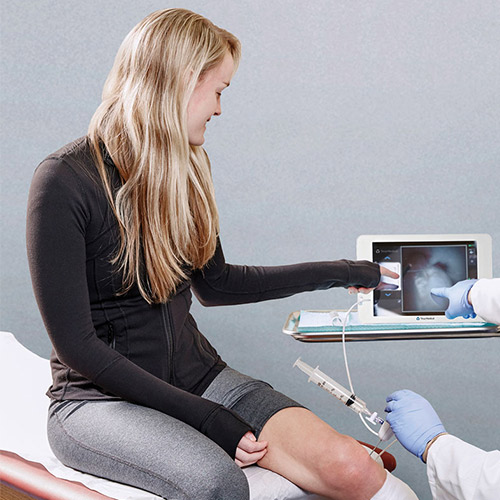
A Note of Reassurance
A Note of Reassurance
The health, safety and well-being of our patients, visitors, employees, and our community is top priority.
As a medical facility, we already adhere to strict practices and policies of cleaning and sanitation daily. Given the current situation, we are taking additional steps to be extra vigilant and keep our office safe for our patients. These additional measures include increasing the frequency of cleaning all surfaces and areas with antibacterial and antimicrobial cleaning products recommended by the CDC. We have added a medical grade HEPA/HEGA air filter purification unit in our office which filters greater than 95% of all dust, spores, mold, bacteria, viruses, chemicals, and gases larger than 0.100 microns. Scientists say that the size of the Coronavirus is 0.125 microns. Therefore, the air filter purification unit is designed to capture airborne particles of this size. Additionally, masks and alcohol-based hand sanitizer is readily available. Thank you for your understanding and cooperation.
Stay Safe & Healthy –
Dr. Jennifer L. Prezioso, DPM, FACFAS
BarkingDogShoes.com Guest Column: The Podiatrist is in! Meet Dr. Jennifer Prezioso
BarkingDogShoes.com Guest Column: The Podiatrist is in! Meet Dr. Jennifer Prezioso
Have you ever found yourself, at the end of an evening, thinking of nothing other than getting home and switching out your gorgeous-but-painful pair of shoes in exchange for an old pair of slippers that has seen better days but never lets you down? If yes, then pull up a chair, have a seat, and welcome home. My name is Dr. Jennifer Prezioso, and I am a shoe lover (and hater) just like you. But, as a Podiatric Surgeon, board certified by the American Board of Foot and Ankle Surgery, I am also a dedicated member of the world of Foot and Ankle specialists striving to help people understand their individual foot type and how to make sure they are making healthy shoe choices. So I not only empathize with those who adore shoes but face footwear challenges, I also advocate for them every day. I recently had the opportunity to write a guest column for BarkingDogShows.com on this very topic. If you would like to learn more, read the full article here.
Source: BarkingDogShoes.com
Balance Now Offers Video Visits!
Balance Now Offers Video Visits!
While we love to see you in our office, we realize it’s not always convenient to do so. Video visits allow you to receive the same quality care as you do in the clinic, without taking time off work or finding a sitter to see us.
It’s easy to get started. Next time you’re in the office or need to schedule an appointment, ask for a video visit. Next, look out for an email or text to confirm your information in our telemedicine platform, called Chiron Health. On the day of your visit, simply log in 15 minutes early to see your doctor over video. It’s that easy.
Video Visits are great for:
● Follow-up visits
● Medication questions
● Lab & test results
● General questions and more
Skip the waiting room, request a video visit for your next appointment!
Tips for Healthy Feet - Summer Foot Care
Tips for Healthy Feet - Summer Foot Care
Source: American Podiatric Medical Association, Inc.
- Limit walking barefoot as it exposes feet to sunburn, as well as plantar warts, athlete’s foot, ringworm, and other infections and also increases risk of injury to your feet.
- Wear shoes or flip-flops around the pool, to the beach, in the locker room and even on the carpeting or in the bathroom of your hotel room to prevent injuries and limit the likelihood of contracting any bacterial infections.
- Remember to apply sunscreen all over your feet, especially the tops and fronts of ankles, and don’t forget to reapply after you’ve been in the water.
- Stay hydrated by drinking plenty of water throughout the day. Drinking water will not only help with overall health, but will also minimize any foot swelling caused by the heat.
- Keep blood flowing with periodic ankle flexes, toe wiggles, and calf stretches.
- Some activities at the beach, lake, or river may require different types of footwear to be worn, so be sure to ask the contact at each activity if specific shoes are needed. To be safe, always pack an extra pair of sneakers or protective water shoes. If your shoes will be getting wet, they should be dried out completely before your next wearing to prevent bacteria or fungus from growing.
- If you injure your foot or ankle while on vacation, seek professional medical attention from a podiatric physician. Many often only contact a doctor when something is broken or sprained, but a podiatrist can begin treating your ailment immediately while you’re away from home. Use our Find a Podiatrist tool to get treatment wherever your travels take you!
- In case of minor foot problems, be prepared with the following on-the-go foot gear:
- Flip flops—for the pool, spa, hotel room, and airport security check points
- Sterile bandages—for covering minor cuts and scrapes
- Antibiotic cream—to treat any skin injury
- Emollient-enriched cream—to hydrate feet
- Blister pads or moleskin—to protect against blisters
- Motrin or Advil (anti-inflammatory)—to ease tired, swollen feet
- Toenail clippers—to keep toenails trimmed
- Emery board—to smooth rough edges or broken nails
- Pumice stone—to soften callused skin
- Sunscreen—to protect against the scorching sun
- Aloe vera or Silvadene cream—to relieve sunburns
7 Things Doctors Tell Their Friends About Feet
7 Things Doctors Tell Their Friends About Feet
Source: Redbook
Top docs weigh in on everything from scary pedicures to stinky feet.
If you forgot to corner the podiatrist at the last party you went to, don’t worry. These top docs share their surprising insights into how to stay healthy from your head down to your—well, you know.
ANYONE CAN GET A STRESS FRACTURE
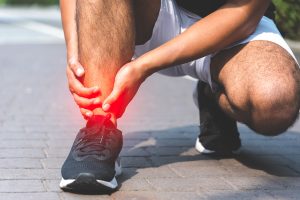 “Last spring, a woman I know went to New York City for vacation. She walked everywhere, and when she came back, she was in a lot of pain. To her surprise, she had a stress fracture. I didn’t find it shocking at all: Most people think stress fractures only happen to runners who pound the pavement regularly, but they can actually be caused by any kind of repetitive movement, especially if it’s a sudden uptick in exercise. I told her to ask her primary care doctor for a bone density test, and make sure she was getting enough vitamin D and calcium— women who are losing bone mass are at higher risk for stress fractures. Then, it was a matter of resting her foot for four to six weeks and making sure she wore hard-soled shoes for support. An X-ray showed she had finally healed— and she told me she’d definitely take more taxis the next time around!” —Casey Humbyrd, M.D., assistant professor of orthopedic surgery at Johns Hopkins University School of Medicine in Baltimore
“Last spring, a woman I know went to New York City for vacation. She walked everywhere, and when she came back, she was in a lot of pain. To her surprise, she had a stress fracture. I didn’t find it shocking at all: Most people think stress fractures only happen to runners who pound the pavement regularly, but they can actually be caused by any kind of repetitive movement, especially if it’s a sudden uptick in exercise. I told her to ask her primary care doctor for a bone density test, and make sure she was getting enough vitamin D and calcium— women who are losing bone mass are at higher risk for stress fractures. Then, it was a matter of resting her foot for four to six weeks and making sure she wore hard-soled shoes for support. An X-ray showed she had finally healed— and she told me she’d definitely take more taxis the next time around!” —Casey Humbyrd, M.D., assistant professor of orthopedic surgery at Johns Hopkins University School of Medicine in Baltimore
BE CAREFUL WHEN YOU GET A PEDICURE
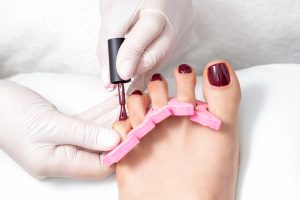
“It’s true that you can get an infection from the nail salon. Some are serious, others aren’t, but many can be prevented. I tell my friends to limit their risk by taking their own nail file and polish anytime they go for a pedicure. Why? Salon tools can carry germs, especially the emery board, which can’t be sanitized. And while it’s unlikely that bacteria or fungi could grow in a bottle of polish, don’t forget that the brush is used on other people’s toes: What if one of them has a fungal infection, or the brush is exposed to their blood through a small cut? It’s worth being careful—and remember, if you bring your own polish, you’ll always be satisfied with the color!” —Emily A. Cook, D.P.M., instructor in surgery at Harvard Medical School and director of podiatric medicine and surgery residency at Mount Auburn Hospital in Cambridge, MA
YOU CAN WEAR HIGH HEELS

“Women ask me all the time if high heels are bad for their feet, and I tell them, ‘Not necessarily.’ If you’re heading to a party or a job where you’ll be sitting a lot, it’s fine to wear a two- to four-inch heel. It’s when you stand or walk in them all day that it becomes a problem. High heels put pressure on your Achilles tendon and may cause your feet, knees, and hips to become overworked—which can lead to posture and balance issues. Your feet also may not absorb shock as well when you’re wearing heels, which can be painful. So you should only stand in them for two hours, if possible. Then, when you get home, stretch out your Achilles tendons and run some cold water over your feet and legs for 10 to 15 minutes. It’ll soothe any pain you’re feeling. And if you just can’t resist dancing the night away in a pair of heels, choose a sturdy wedge to lower your risk of what I call a ‘Gloria Gaynor fracture.’ It’s hard to pay attention to your feet when you’re getting down to ‘I Will Survive,’ and you might twist an ankle.” —Rock G. Positano, D.P.M., M.P.H., director of nonsurgical foot and ankle service at the Hospital for Special Surgery in New York City
SMELLY FEET? THIS WILL HELP.
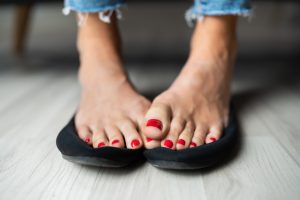 “Friends sometimes come to me complaining of foot odor (we’ve all been there!). First, you have to understand why your feet smell: Your feet and hands contain more sweat glands than any other part of your body. And when your feet sweat, the perspiration mixes with the bacteria living in your socks or shoes, generating the odor. The trick I share with folks: Drop a black tea bag in a warm foot-bath and soak your feet for 30 minutes—it’ll reduce the bacteria on your feet and cut down on the smell.” —Lee S. Cohen, D.P.M., a sports podiatrist practicing in Philadelphia and podiatrist consultant to the Philadelphia Eagles
“Friends sometimes come to me complaining of foot odor (we’ve all been there!). First, you have to understand why your feet smell: Your feet and hands contain more sweat glands than any other part of your body. And when your feet sweat, the perspiration mixes with the bacteria living in your socks or shoes, generating the odor. The trick I share with folks: Drop a black tea bag in a warm foot-bath and soak your feet for 30 minutes—it’ll reduce the bacteria on your feet and cut down on the smell.” —Lee S. Cohen, D.P.M., a sports podiatrist practicing in Philadelphia and podiatrist consultant to the Philadelphia Eagles
TREAT YOUR BUNION THIS WAY

“A friend came to me recently with a painful bunion. She was worried she would need surgery, which can take up to eight weeks of recovery time—time she didn’t have. She asked if there was any other way to heal it and even prevent it from coming back. This is what I told her: A bunion is a long bone that forms on the joint at the base of your big toe, and it’s often the result of ill-fitting footwear or unstable feet. My friend, for example, has flat feet, the perfect breeding ground for bunions because they don’t bear weight as effectively. Your big toe can start to rub against the one next to it, causing a bunion to ‘swing out.’ So unfortunately, there’s not a lot my friend could have done to prevent hers. (People with high arches are usually fine, as long as they wear shoes that fit.) Since surgery—which shortens the bone—was off the table, I suggested a Bunion Bootie, a flexible splint that pulls your big toe out so it no longer rubs. Wearing that regularly will help soothe the pain, as will avoiding shoes that compress your toes. She’s following my advice and says she’s feeling much better.” —Emily Splichal, D.P.M., podiatrist and human movement specialist practicing in New York City, and author of Barefoot Strong
THAT SPOT COULD KILL YOU
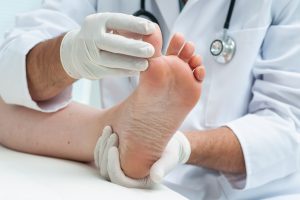 “No one ever thinks to check their feet for signs of skin cancer. I tell my friends, ‘Everyone thinks Bob Marley passed away from cancer of the liver and brain, but his cancer actually started as melanoma on his toe.’ That gets their attention. Melanoma of the foot, especially the bottom of your foot, is extremely deadly because it so often goes unnoticed—and every part of your body can be exposed to the sun. So see your derm annually for a skin check, and do a monthly self-check at home. Look closely at your feet, especially the bottoms, between your toes, and under your toenails. Take note of any dark spots or red, scaly, or pearly spots on your skin. On your nails, watch for dark streaks or lines, as well as any protrusion—skin cancer under a nail can make it jut out. See your doc if anything looks troubling. If you catch skin cancer early, it’s almost always curable.” —Will Kirby, D.O., board-certified dermatologist practicing in Los Angeles and associate clinical professor of dermatology at Nova Southeastern University and Western University of Health Sciences
“No one ever thinks to check their feet for signs of skin cancer. I tell my friends, ‘Everyone thinks Bob Marley passed away from cancer of the liver and brain, but his cancer actually started as melanoma on his toe.’ That gets their attention. Melanoma of the foot, especially the bottom of your foot, is extremely deadly because it so often goes unnoticed—and every part of your body can be exposed to the sun. So see your derm annually for a skin check, and do a monthly self-check at home. Look closely at your feet, especially the bottoms, between your toes, and under your toenails. Take note of any dark spots or red, scaly, or pearly spots on your skin. On your nails, watch for dark streaks or lines, as well as any protrusion—skin cancer under a nail can make it jut out. See your doc if anything looks troubling. If you catch skin cancer early, it’s almost always curable.” —Will Kirby, D.O., board-certified dermatologist practicing in Los Angeles and associate clinical professor of dermatology at Nova Southeastern University and Western University of Health Sciences
PAIN IN THE FEET CAN MEAN A PROBLEM SOMEWHERE ELSE
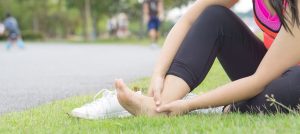
“A while back my brother-in-law started experiencing numbness and tingling in his feet. I told him to see his doctor right away because those symptoms, as well as burning, can indicate a range of conditions that can be truly serious. In his case, it was a compressed nerve in his back. That’s since been treated, and he’s doing well. But his symptoms also could have pointed to diabetes or peripheral vascular disease, where the arteries that run toward your feet are blocked. And they’re not the only symptoms that are worrisome: If both of your feet swell out of the blue, you could have an issue with your kidneys, causing fluid buildup. If one foot swells—especially if your foot or leg is red and painful—get help right away because you could have a blood clot. Dry, flaky, cold feet indicate thyroid trouble, too. My point is, don’t panic, but definitely don’t ignore these kinds of symptoms. See your doctor as soon as possible.” —Tara Narula, M.D., a medical contributor for CBS This Morning

